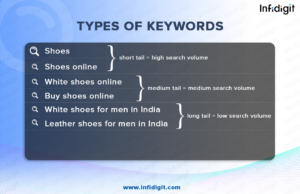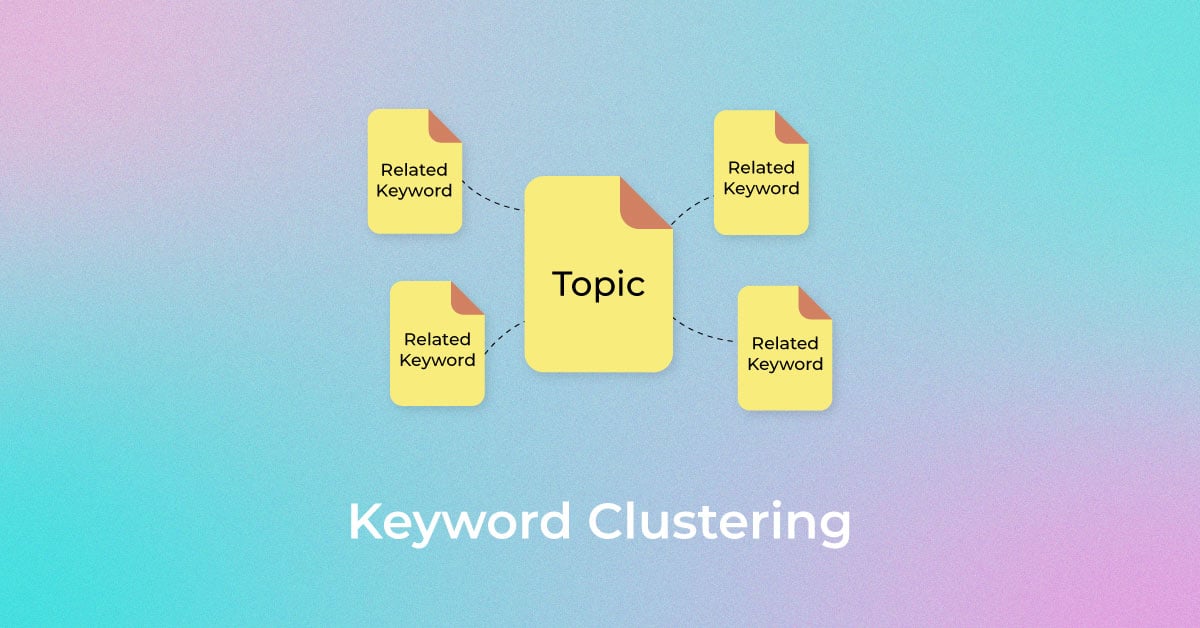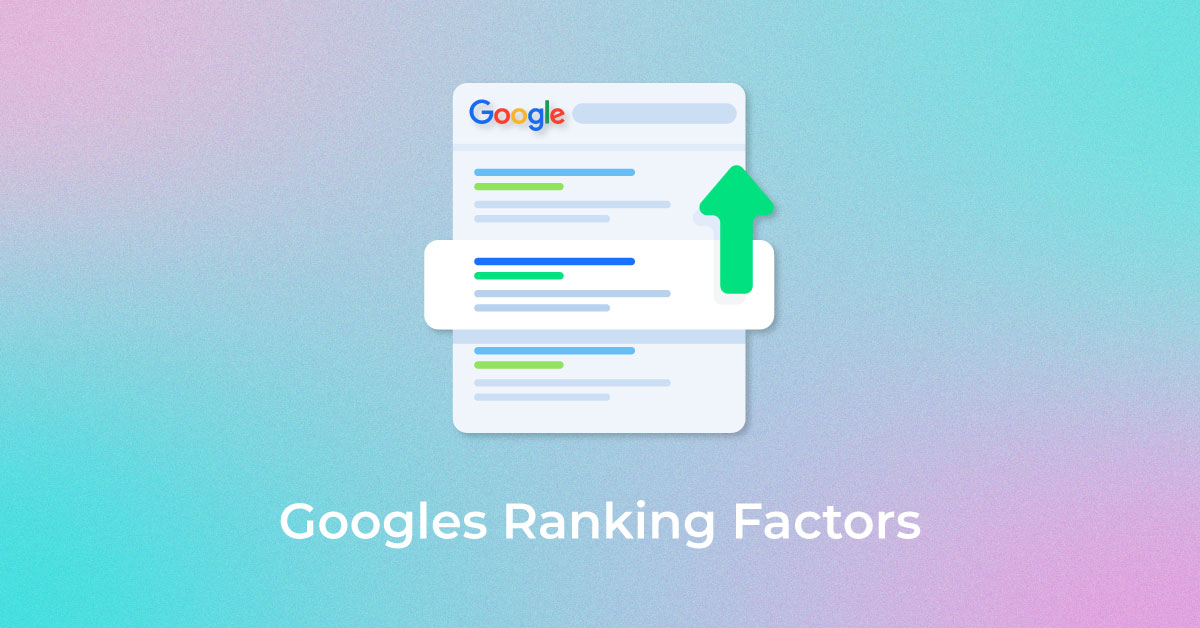If you are asking “what is a long-tail keyword?” we would begin with urging you not to be misled by the name. Long-tail keywords have nothing to do with the length of keywords, how specific they are or how likely they are to convert visitors to the website. These keywords are words or phrases with lower search volumes. They are targeted towards niche segments and are very specific to their purpose.
What are long-tail keywords?
Whenever you are performing a keyword research in your targeted domain on the internet, you can find a sleuth of keywords with their search volumes. In their graphical representation, you would see the most popular keywords at the top and the lesser popular keywords at the tail-end. This graph’s shape would resemble that of a dragon, and the most popular keywords would be at or near the head of the dragon (near the top of the chart). Hence, they are called “head keywords”. These keywords are almost always short in length. For example, if you are looking for tools for SEO, then “SEO tools” would be one of the head keywords.
However, head keywords account for a very small percentage of keywords in the searches carried out on the web. Most of the searches performed by the users are more specific, and usually contain keywords from the “tail-end” of the dragon in the graph. These terms are very specific and usually longer than head keywords, hence the name “long-tail keywords”. For example if you are specifically looking for SEO tools required for Facebook, then the long-tail keyword would be “SEO tools for Facebook”. Now that you know what a long-tail keyword, let us delve into why they are important.

Why are long-tail keywords important for SEO?
Long-tail keywords can drive enormous amounts of traffic to your website thus increasing your revenue. It can improve your SERP ranking because it makes the search specific and the more specific (or longer) a search item is, the more likely users are to use it.
Moreover, the users who are searching for specific terms are more likely to engage and buy your products or services. This is why focusing on long-tail keywords is important for your SEO strategies. Using long-tail keywords tools, you can focus on finding your niche audience.
A long term advantage of these keywords is that they remain largely unchanged for much longer than some other keywords. The popularity of keywords often depends on search trends. This can significantly affect their effectiveness in terms of SERP rankings. Long-tail keywords, however, are known to be more consistent and relevant for much longer. Additionally, these keywords are also less susceptible to be overtaken by similar long-tail keywords in the same domain. This means businesses can capitalise on the keywords that they know will remain relevant for much longer, and continue to generate organic traffic for their Web pages.
How long-tail keywords work?
Long-tail keywords cater to the audience looking for very specific results. For instance, if you are an eCommerce company selling kitchen appliances, the chances that your website appears on the top for the keyword “kitchen appliances” is highly unlikely. This is because there is too much competition for this keyword, especially if you are a small company.
However, if you specialize in selling specific products like high-end chef’s utensils, then targeting keywords like “best kitchen utensils for chefs” will bring in much better rankings, and refined organic traffic on your website. This is because the visitors will be looking for this specific category of products.
Examples of Long Tail Keywords
The question ‘what are long tail keywords’ is part of a bigger discussion about how to best serve users on the Internet. Ideally, filling content with relevant, but user-specific long-tail keywords best optimizes a site. For instance, “coffee filter” does not seldom generate as much traffic as “homemade coffee filter” does, mostly since its difficulty level is lower than the former.
Local brands – especially within radar – add “near me” to long-tail keywords for generating local foot traffic. There are multiple long-tail keywords examples. Adding “content marketing for SaaS near me” can optimize traffic, usually even more than “SaaS” alone. Search engines recognize user-specific keywords that target specific queries, especially when asking what is long-tail keywords.
“When to plant tomatoes” will rank higher than “tomato plant” – especially since the search area for the latter is unusually high. Using specific long-tail keywords help in ranking higher because they are farther away from the usual keywords most brands use time and again.
How to Find Long-Tail Keywords?
1. Google Autocomplete Search
One of the most convenient ways to search for long-tail keywords is to use Google autocomplete. Begin typing keywords related to whatever you want to search into the Google search box. Google will pick up from there and display several autocomplete suggestions. These autocomplete suggestions are, in most cases, very specific, and also less frequently searched. Moreover, you can also look at the “people also asked for” section on the SERP to find specific search terms that can be used as long-tail keywords.
2. Google Searches Related to
The “Searches related to” area at the bottom of a Google SERP lists out the other searches in the same domain. These searches tell you what other types of specific searches are being carried out under the same broad topic. This process is a bit time-consuming but can help you find other, popular and definitive search terms under the broader umbrella topic.
3. Answer the Public
This is a long-tail keywords tool that can help you streamline the process of finding specific search terms. This tool is very efficient in visualizing the autocomplete suggestions and search questions in the form of an image. This helps businesses find the most relevant keywords for themselves, rather than going through the mechanical process of finding it on Google through manual searches.
When you are able to use long-tail keywords and common keywords together, you will be able to monitor the most common and relevant search queries from your audience. However, you would still need to capture data related to the volume of the keywords in order to figure out the best ones to use for optimizing your Web page. This is where other tools like Ahrefs and Ubersuggest can help you.
4. Forums and Boards
Forums and boards are often overlooked because it is difficult to scout through thousands of topics and locate relevant long tail keywords. But, if you search smartly on Google, you can find several such terms used directly by your target audience.
When people do not find what they’re looking for on the websites of service providers and Google, they will typically go to public forums like Reddit or even industry-specific forums. Some of these might be anonymous queries, so you cannot use them as a lead generation approach. But, it gives you a reasonably good idea about the long term keywords used by people who have an intent for your services/products.
Here is how you can discover such keywords:
- Go to Google and try a few combinations like ‘keyword + forum’, ‘keyword + board’, ‘keyword + Reddit’, etc.
- Find the threads, pages, sections, and forums that are active and frequently updated.
- Mark the long-tail keywords you can locate in the questions and answers across such threads.
5. Soovle Tool
Soovle is a free tool that can exponentially increase the impact of your keyword targeting efforts. In addition, it is an easy to use engine that sits on top of several search engines.
Here is how it works:
- Visit Soovle and enter your search query in the search box located in the middle of the page.
- Soovle will show you the keywords associated with your search query on Google, Amazon, Bing, YouTube, Bing, Yahoo, Wikipedia, and Answers.
- You can download this sheet by clicking on the download button at the top left of the screen and hit refresh to go back to the blank search box.
6. People Also Ask
As mentioned already, this section is very helpful in finding out the alternate searches being carried out for the same topic. It can be very helpful in discovering different types of search terms and evaluating which one is searched more using keyword research tools. You can choose the search terms with more search volumes by utilizing this section on Google’s SERPs for your topic.
7. Google Search Console Performance Report
If you have been running your website for a while, there is a high probability that you might be ranking on 3rd, 4th, or even 5th pages for some keywords – without having made any proactive efforts to do so.
When you produce value-delivering content, you often end up including long tail search terms. But, since they are not a part of your SEO strategy, you usually do not focus on such terms. Here is how you can locate such terms, the pages performing well for such terms, and scale the results.
- Visit Google Search Console, login, and click ‘Performance’.
- Scroll and locate ‘Queries’. Sort this list according to ‘Position’.
- Ideally, you should start from 500 rows and keep searching till you start seeing search terms where you rank within 10-15 rows.
- Now, you can toss these terms to your Keyword Planner and see the ones that have promising traffic.
- Optimize your website for the terms that have high traffic, low competition, and greater potential for conversions.
- Once you have found such terms, you can click on ‘Pages’ in the section just beside ‘Queries’ and locate the webpages on your website which are performing well on these keywords. You can use these pages as models for further optimizing the other pages.
8. Google Trends
Google Trends is an amazing, free-to-use tool that helps with exploratory long tail keyword analysis. It gives a simple data visualization tool in the form of a graph showing traffic surges and contractions across a timeline.
For most long tail keywords, you will find peaks and bottoms since it’s almost impossible to forecast the surge in such keywords. But, there will be keywords that have had an upward trajectory for a while – these might be competitive but considerable opportunities.
One area where Google Trends is overlooked is the ‘Related queries’ option, which shows the queries frequently associated with the keyword entered. Usually, this data is not available on other popular keyword research tools and can be a great source for locating long-tail keyword opportunities. Some queries surge during specific times in a year. For instance, if you can see a pattern, ‘tax filings’ around the end of the year, you can utilize the trend proactively.
9. Quora
You might have already visited Quora if you have typed a straightforward question in the Google search bar. Quora is similar to Yahoo Answers and several other public forums. But, the website is focused on Q&A and publicly visible profiles. This adds accountability and makes the answers usually helpful.
You can create an account on Quora and type your keywords in the search bar. You will be shown questions related to the keyword – and this is where you can get creative. Click on long questions with more responses. Use shorter versions of such questions in the keyword planner and find long-tail keyword opportunities.
Most of the queries on Quora are posted by people who could not find the answer anywhere else. This makes the keywords sourced from Quora loaded with high intent. With a keyword planner, you can filter for search traffic, frequency, and competition. Some websites even choose to pick the entire question and develop content around it.
10. Check your competitors
A great place to look for long-tail keywords is your competitors’ websites. Using tools like Site Explorer from Ahrefs, you can easily find out which long-tail keywords your competitors are ranking for.
All you need to do is put in the link of your competitor’s website in Site Explorer, and generate the organic keywords report. This report will highlight all the long-tail keywords that are bringing in the most traffic to their websites. Once you have this list of keywords, repeat this activity with at least 5 more of your competitors’ websites. This will help you in mining a good enough list of long-tail keywords to generate good content ideas for a long while.
How to Use Long Tail Keywords in Your SEO Strategy
Now that you have a few sources to procure and filter long-tail keywords, here is how you can use them in your SEO strategy:
-
Optimize a Blog Post Targeting a Long Tail Keyword
One of the most linear strategies of using a long tail keyword is creating a blog post around the exact search term. This would allow for logical repetition within the blog, its H1 & H2 headers, and on-page SEO elements like meta content and image descriptions.
If you have a list of distinct long-tail keywords with considerable search traffic and low competition, creating a blog post around a specific long-tail keyword might be worthwhile. However, the strategy is quite focused and not always scalable.
Let’s assume there is a long-tail keyword with monthly search traffic of around 5,000. If you create a blog post around this, there is a high probability that your blog will end up on the very first SERP for the term. However, even if it gets there – the theoretically maximum traffic you can generate with this long-tail keyword is 5,000. In reality, you can expect about 20%-30% of the traffic from this theoretical limit, i.e. 1,000-1,500 hits in a month.
Make sure you do not stuff older blog posts with new long-tail keywords. It might backfire if not done accurately and is not worth the risk.
-
Include Long Tail Keywords in Your Content
This is a more accessible strategy with a faster turnaround. Once you have the long tail keywords’ list available, integrate it with your on-page elements. You can use it in combination with middle tail keywords to attract more high-intent traffic and search volumes. You can use the long-tail keywords in headers and the actual content and optimize the other elements with other keyword groups.
Conclusion
Finding long-tail keywords can be an excruciating process and can prove to be ineffective if not done properly. Hence, businesses should avail professional SEO services from competent companies like Infidigit for finding these hidden gems, as they are more proficient and experienced in tapping into the search engines’ patterns and finding the most relevant search terms related to your business.
Popular Searches
How useful was this post?
4 / 5. 1


















5 thoughts on “What Are Long Tail Keywords? SEO Benefits & Examples”
Thanks for helping those who want to learn SEO. It’s quite a user-friendly blog. We also got many ideas through this blog.
Thank you for sharing your feedback. Please read our latest posts for more updates.
It was great to learn about long tail keywords. The blog was very informative about the uses and importance of long tail keywords.
Thanks. We are glad to know that you liked our article. Check out our recent posts for more updates.
That is really amazing information foe a SEO learners, We also got so many ideas from this article.